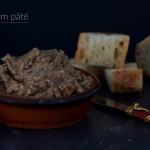Fermentation is one of the oldest and easiest methods of food preservation. One of the most well-known examples of a wild fermented food is sauerkraut. Fermenting is so simple. If you have salt, a jar, and some vegetables, you’re basically done.
The fermentation method I use most often is wild fermentation, which simply means that the bacteria and enzymes used in the process are from the air, surrounding environment, and the vegetables you’re fermenting, rather than bacteria you introduce on purpose. An example of non-wild fermentation would be brewing beer or wine with yeast packets, containing specific organisms to make particular types of wine.
Sometimes vegetable ferments are called lacto-ferments, not because they have anything to do with milk or lactose, but because when the bacteria and enzymes begin working away eating the sugars in our vegetables, lactic acid is produced. Lactic acid and carbon dioxide are both by-products of lacto-fermentation.
Fermentation is exciting for so many reasons. The one I hear come up a lot in workshops is the probiotic content of fermented foods. Probiotics are living bacteria in our bodies and they play crucial roles in our health. High levels of healthy flora (bacteria) in our guts can contribute to increased immunity and improved digestive functions as well as greater mental health. I always feel a certain amount of self-satisfaction when I make and eat my own ferments. Capsules or powdered probiotics can be prohibitively expensive while wild fermenting in your own kitchen is affordable – and empowering. Wild fermented foods are living foods, literally ALIVE with bacteria. It’s an excellent, cheap, and delicious way to get in your probiotics for the day.
Another thing I love is how complex the flavours of fermented foods can be. Some things, like ginger and chilis, become powerfully strong after fermentation. Radishes on the other hand, especially the little red ones that come out in spring, lose a lot of their spicy bite, developing a more well-rounded flavour to them in a salt brine. After I’ve eaten all the veggies in a jar and am left with just brine, I like to hang onto it and use it as soup stock, salad dressing base, or a general tonic to sip on. The leftover brine contains beneficial bacteria and has the added bonus of being extremely flavourful.
A question I’m asked often in workshops is “Are ferments unsafe to eat? Can I get botulism from fermented foods?” The answer to both questions is no. Botulism is an organism that lives in the soil and, in this environment, is totally benign. The danger of botulism comes when it is in an anaerobic environment, or an environment without oxygen. This is why precautions during hot water canning are so important: the hot water bath draws the remaining oxygen out of the jar and the lid seals tight. If there is a botulism organism in the that jar, it then has the opportunity to grow and potentially harm us.
In lacto-fermentation, we are not sealing anything. We are constantly checking on our ferments, shaking, smelling, poking, and tasting them to get them as delicious as possible. The salt water we use provides an environment that will not allow harmful bacteria to grow (because salt is anti-septic), but still allows helpful bacteria to thrive. It is impossible to get sick from botulism from consuming lacto-fermented vegetables using these methods.
A note about recipes: experienced fermenters will sometimes hesitate to give recipes for things, often because so much is done from memory or, if you’re me, eyeballed and made-up on the spot. Once you are comfortable with using a recipe, feel free to experiment! Add new spices! Use a more or less-salty brine! Fermentation is pretty adaptable, so don’t be shy about branching out!
Basic Lacto-Fermented Veggies
- glass jar (washed, rinsed with hot water, and dry)
- salt
- veggies of choice: carrots, string beans, kohlrabi, cut into desired shape
- fresh dill
- garlic
- chilis (fresh or dried, if desired)
Mix brine: 2 cups of water + 1 TBSP salt = 4% salinity.
Rinse and cut veggies into desired shape. If you’re using beans or carrots, trim off both ends
Peel garlic cloves and cut in half, chop dill roughly, and chop chilis roughly
Place dill, garlic, and chilis at the bottom of the jar
Pack veggies in tightly. Make sure the garlic, dill, and chilis are
covered and pushed down by the veggies. Ensure there
is at least 1/2 inch between the top of the veggies and
the top of the jar
Fill jar with brine and cover with lid or plate (you do not have to seal tightly, but you can)
Check on your ferments every day. Fermentation time will depend on the weather, humidity
levels, and what you are fermenting.
After a couple days you should start to see white foam, bubbles, and lively action coming from
your jar. It should also start to smell different. This is excellent!
Taste your ferments often after Day 3. When they are at the strength you want them to be, put
the jar in the fridge.
Tips + Tricks for Lacto-Fermentation
- ensure everything stays under the brine at all times. You might have to use a weight to keep things from floating above the brine. You can use a smaller clean mason jar or a ziploc bag filled with water.
- White mold is ok and completely harmless. It will change the taste, but is safe to eat. Scrape it off and eat your ferments as usual.
- Green or black mold is NOT safe to eat. Compost your ferments and start over. Don’t be discouraged! It happens!
- If you have a lid screwed on while fermenting happens, be sure to burp the jars daily (unscrew the lid to release some of the gas/pressure)
- table salt (in the blue box) has added sugar to it. It’s ok to use if that’s what’s available, but if you have sea salt or other salt that is just salt, use that first
- a less salty brine will result in a stronger flavour, because it allows more bacteria to grow in the ferments, but is more susceptible to spoilage
- a more salty brine will have a lower probiotic count, but will last longer.
Nicole Marcoux is a Registered Holistic Nutritionist. Her focus is on mental and digestive health and accessible, affordable, inclusive holistic health services. You can email her anytime with questions, comments, or exciting updates about your ferments at: riotsnotdietitian@gmail.com








